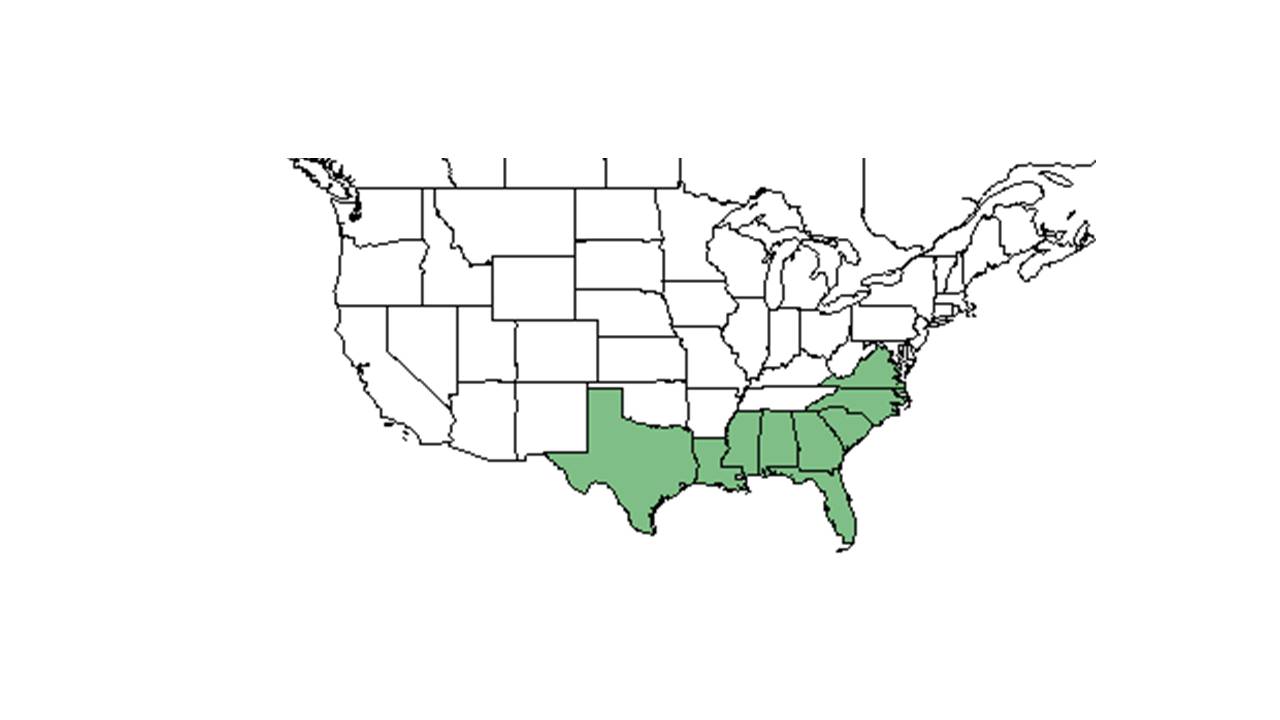Difference between revisions of "Eupatorium mohrii"
| Line 24: | Line 24: | ||
==Ecology== | ==Ecology== | ||
===Habitat=== <!--Natural communities, human disturbed habitats, topography, hydrology, soils, light, fire regime requirements for removal of competition, etc.--> | ===Habitat=== <!--Natural communities, human disturbed habitats, topography, hydrology, soils, light, fire regime requirements for removal of competition, etc.--> | ||
| − | It does well in open canopy areas on longleaf pine habitats. Does not do well in highly disturbed areas (such as clear cutting)<ref>Brockway, D. G. and C. E. Lewis (2003). "Influence of deer, cattle grazing and timber harvest on plant species diversity in a longleaf pine bluestem ecosystem." Forest Ecology and Management 175: 49-69.</ref> | + | It does well in open canopy areas on longleaf pine habitats. Does not do well in highly disturbed areas (such as clear cutting)<ref>Brockway, D. G. and C. E. Lewis (2003). "Influence of deer, cattle grazing and timber harvest on plant species diversity in a longleaf pine bluestem ecosystem." Forest Ecology and Management 175: 49-69.</ref> It is found areas that have become wet in some parts of the year such as in slash pine flatwoods, hammocks, near creeks, pond-pine scrubs, peaty pine savannas, wet flatwwods, swampy depressions between sand ridges, pine-palmetto flatwoods, upper edges of hilldside bogs, edges of titi bogs, swales and dunes, and in river floodplains (FSU Herbarium). It is also found in human disturbed areas such as pinelands that have been clear cut, along roadside depressions, embankments, edges of an artificial pond, and in powerline corridors (FSU Herbarium). It is associated with areas that have moist soil, moist sandy peaty soil, semi-wet soil, muckly aulluvium soils, and moist sandy clay (FSU Herbarium). |
===Phenology=== <!--Timing off flowering, fruiting, seed dispersal, and environmental triggers. Cite PanFlora website if appropriate: http://www.gilnelson.com/PanFlora/ --> | ===Phenology=== <!--Timing off flowering, fruiting, seed dispersal, and environmental triggers. Cite PanFlora website if appropriate: http://www.gilnelson.com/PanFlora/ --> | ||
Revision as of 11:54, 13 July 2015
| Eupatorium mohrii | |
|---|---|

| |
| Scientific classification | |
| Kingdom: | Plantae |
| Division: | Magnoliophyta - Flowering plants |
| Class: | Magnoliopsida – Dicotyledons |
| Order: | Asterales |
| Family: | Asteraceae ⁄ Compositae |
| Genus: | Eupatorium |
| Species: | E. mohrii |
| Binomial name | |
| Eupatorium mohrii Greene | |

| |
| Natural range of Eupatorium mohrii from USDA NRCS Plants Database. | |
Contents
Description
Common Name: Mohr's thoroughwort
Distribution
Ecology
Habitat
It does well in open canopy areas on longleaf pine habitats. Does not do well in highly disturbed areas (such as clear cutting)[1] It is found areas that have become wet in some parts of the year such as in slash pine flatwoods, hammocks, near creeks, pond-pine scrubs, peaty pine savannas, wet flatwwods, swampy depressions between sand ridges, pine-palmetto flatwoods, upper edges of hilldside bogs, edges of titi bogs, swales and dunes, and in river floodplains (FSU Herbarium). It is also found in human disturbed areas such as pinelands that have been clear cut, along roadside depressions, embankments, edges of an artificial pond, and in powerline corridors (FSU Herbarium). It is associated with areas that have moist soil, moist sandy peaty soil, semi-wet soil, muckly aulluvium soils, and moist sandy clay (FSU Herbarium).
Phenology
native, perennial herb in longleaf pine stands.[2]
Seed dispersal
Seed bank and germination
Fire ecology
Pollination
Mark Deyrup at Archbold Biological Station observed these Hymenoptera species on Eupatorium mohrii
Apidae: Apis mellifera
Apidae: Bombus impatiens
Halictidae: Agapostemon splendens
Halictidae: Halictus poeyi
Leucospididae: Leucospis robertsoni
Leucospididae: Leucospis slossonae
Megachilidae: Coelioxys mexicana
Megachilidae: Dianthidium floridiense
Megachilidae: Megachile albitarsis
Sphecidae: Bicyrtes capnoptera
Sphecidae: Bicyrtes insidiatrix
Sphecidae: Cerceris blakei
Sphecidae: Philanthus ventilabris
Sphecidae: Prionyx thomae
Sphecidae: Tachytes pepticus
Sphecidae: Tachytes validus
Vespidae: Pachodynerus erynnis
Use by animals
Diseases and parasites
Conservation and Management
Cultivation and restoration
Photo Gallery
References and notes
- ↑ Brockway, D. G. and C. E. Lewis (2003). "Influence of deer, cattle grazing and timber harvest on plant species diversity in a longleaf pine bluestem ecosystem." Forest Ecology and Management 175: 49-69.
- ↑ Harrington, T. B. (2011). "Overstory and understory relationships in longleaf pine plantations 14 years after thinning and woody control." Canadian Journal of Forest Research 41: 2301-2314.